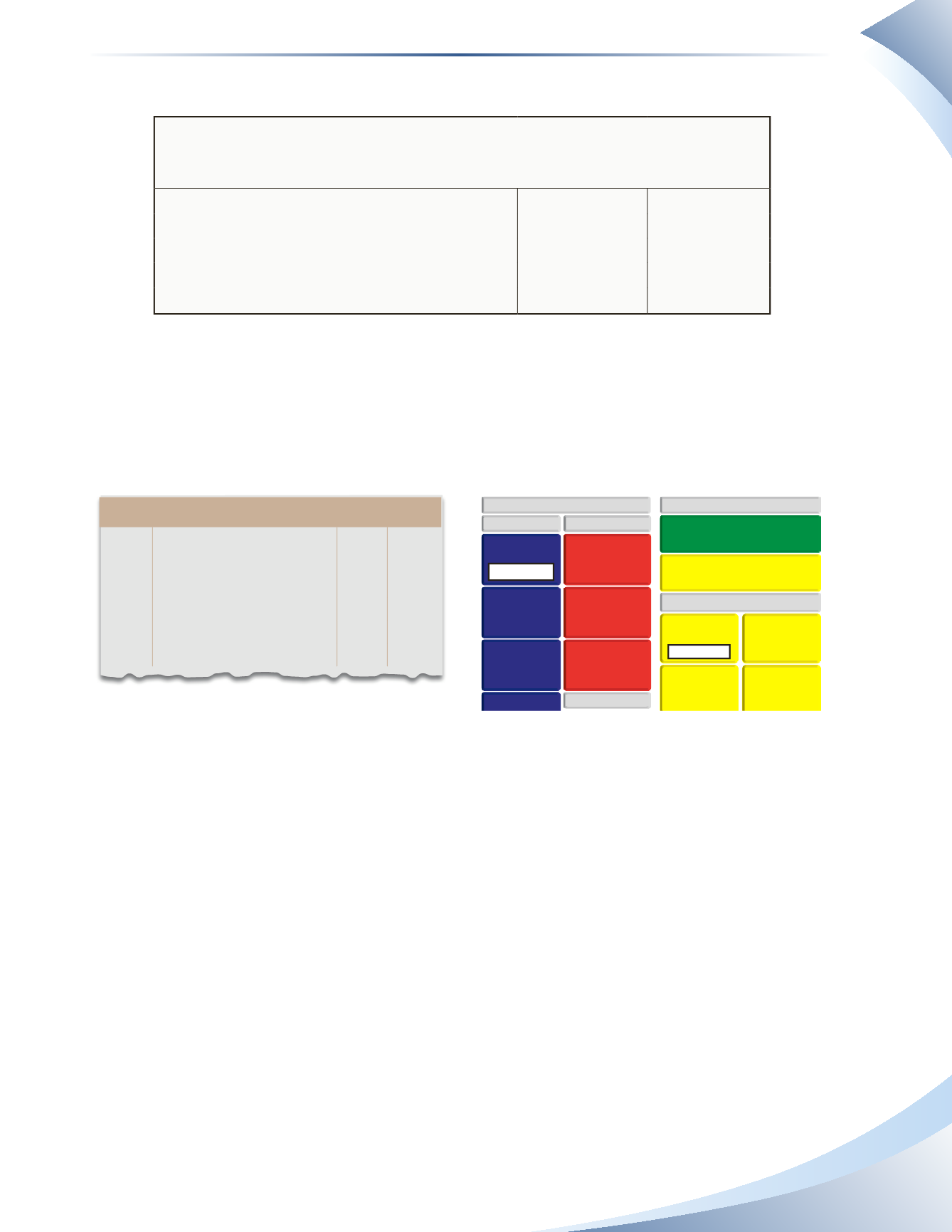
Chapter 10
Cash Controls
297
The bank reconciliation for this item is shown in Figure 10.9.
hr Clothing
Bank reconciliation
June 30, 2016
ledger
Bank
Balance as per records
$3,500
$3,450
Less: Unrecorded charges
Bank Charges June 30
(50)
Reconciled balance
$3,450
$3,450
______________
FIGURE 10.9
As with the unrecorded deposit shown previously, the adjustment is shown in the ledger column,
so it must be updated with a journal entry as shown in Figure 10.10. Notice that the journal entry
includes the account bank charges expense. On the Accounting Map, bank charges are listed under
operating expenses on the income statement.
Journal
Page 1
Date
account title and
explanation
Debit Credit
2016
Jun 30 Bank Charges Expense
50
Cash
50
Bank service charge
______________
FIGURE 10.10
ACCOUNTS
RECEIVABLE
INCOME STATEMENT
SALES REVENUE
COST OF GOODS SOLD
ACCOUNTS
PAYABLE
INVENTORY
ASSETS
BALANCE SHEET
LIABILITIES
CASH
OWNER’S EQUITY
UNEARNED
REVENUE
LOANS
PAYABLE
–
$50 CR
GROSS PROFIT
BANK
CHARGES
INSURANCE
RENT
SALARIES
+
$50 DR
The journal entry is recorded by debiting (increasing) bank charges expense and crediting
(decreasing) cash (an asset).
Another type of bank charge can occur as a result of
non-sufficient funds
(NSF)
cheques. NSF
cheques are payments made to the company by a customer who does not have sufficient funds in
their bank account to cover the amount of the cheque. If the customer does not have enough money
in their bank account to cover the cheque, their bank will charge them an NSF fee.The company’s
bank will also charge the company with an NSF fee. The fee is to cover the bank’s administrative
costs of dealing with the NSF cheque.
For example, HR Clothing receives a $400 cheque from a customer and deposits the cheque into the
company bank account on June 17. However, the bank cannot successfully collect the $400 from the
customer’s account because the customer does not have enough money in his account to support this
withdrawal. The bank would return the cheque to the company and charge an additional service fee.
These two transactions are illustrated in Figure 10.11 between the general ledger and the bank statement
respectively.


